Soviet brutalist architecture: beyond the genre's striking image
Soviet brutalist architecture offers eye-catching imagery; we delve into the genre’s daring concepts and look beyond its buildings’ photogenic richness

The curious thing about Soviet brutalist architecture is that it is incredibly rich in profoundly photogenic buildings that appear simultaneously utopian in their conception and intent and distinctly dystopian in their dilapidated states of disrepair.
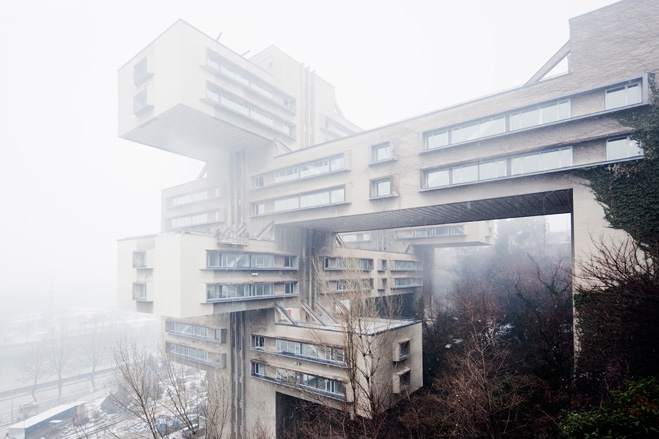
Ministry of Highways and Transportation, 1979, Tbilisi, Georgia, shot by photographer Simona Rota; as seen at the 2012 Vienna exhibition 'Soviet Modernism 1955-1991: Unknown Stories'
Soviet brutalist architecture explored
The brutalist architecture of the Soviet era has found itself fetishised in publishing and across social media and succumbing to the indignity of apparently inspiring AI to create machine hallucinations feeding off their visual vocabulary. Everything from publisher Fuel’s counterintuitively successful Soviet Bus Stops (now also a film) to massive coffee table brutalist blockbusters (the spectacular photos of Frédéric Chaubin, in particular) and their occasional appearance in the backgrounds of movies and photoshoots has created a kind of cult.
But it is based solely on the image; these remarkable buildings represent a very different moment, a late burst of optimism in socialism expressed through architecture. What, exactly, do these buildings mean? And how did they come about in such numbers and become neglected so quickly?
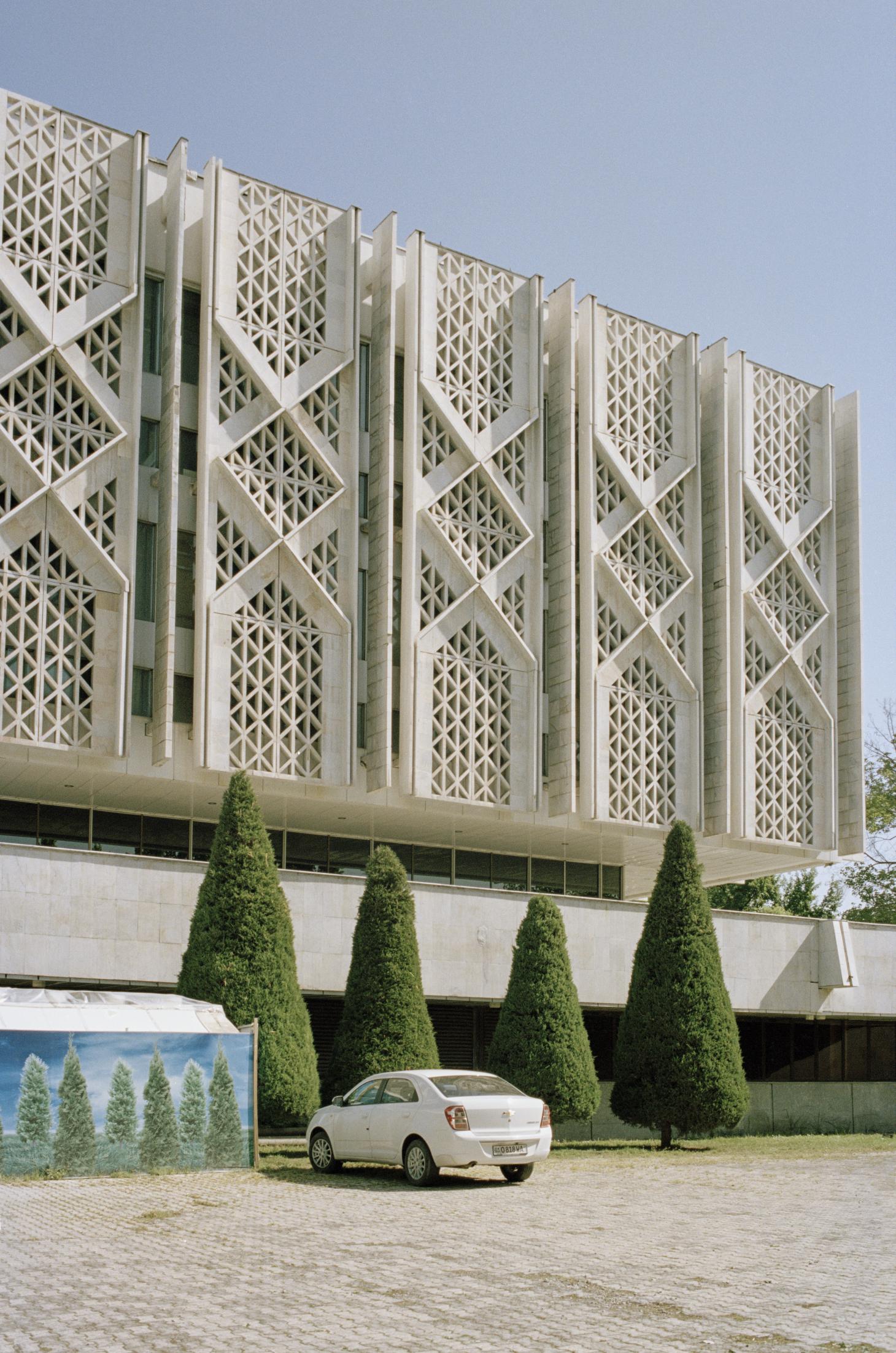
The Lenin Museum in Tashkent; shot by Stefan Giftthaler for The Trip to Tashkent story in Wallpaper* January 2020 (W* 250)
Soviet brutalism: the history
To understand a little, you need to read the rapid waves of change from the revolutionary architecture of the Constructivists in the 1920s, who managed to build only a small number of (albeit deeply influential) structures, and their repression by Stalin in the 1930s in favour of a stolid, hypertrophied classicism. That, in turn, gave way after Nikita Krushchev’s accession in 1953 to a concentration on addressing the huge Soviet housing problem, the construction of millions of units of mostly panel blocks over the following decades.
It was with Leonid Brezhnev’s coming to power in 1964 (he served as General Secretary of the Communist Party of the Soviet Union till 1982) that the focus shifted to the many, vast regions of the country with a certain loosening of central control; and they, in turn, began to express emerging modern identities through architecture. At the same time, the sci-fi era had taken hold, first with the success of Sputnik and then with widespread scientific development in everything from nuclear power to virology, a new reliance on technology and a faith in the future expressed through fiction and film. There was also, contrary to the myth of a closed society, considerable exchange between East and West, with Soviet architects being well aware of the emergence of brutalism elsewhere in Europe.
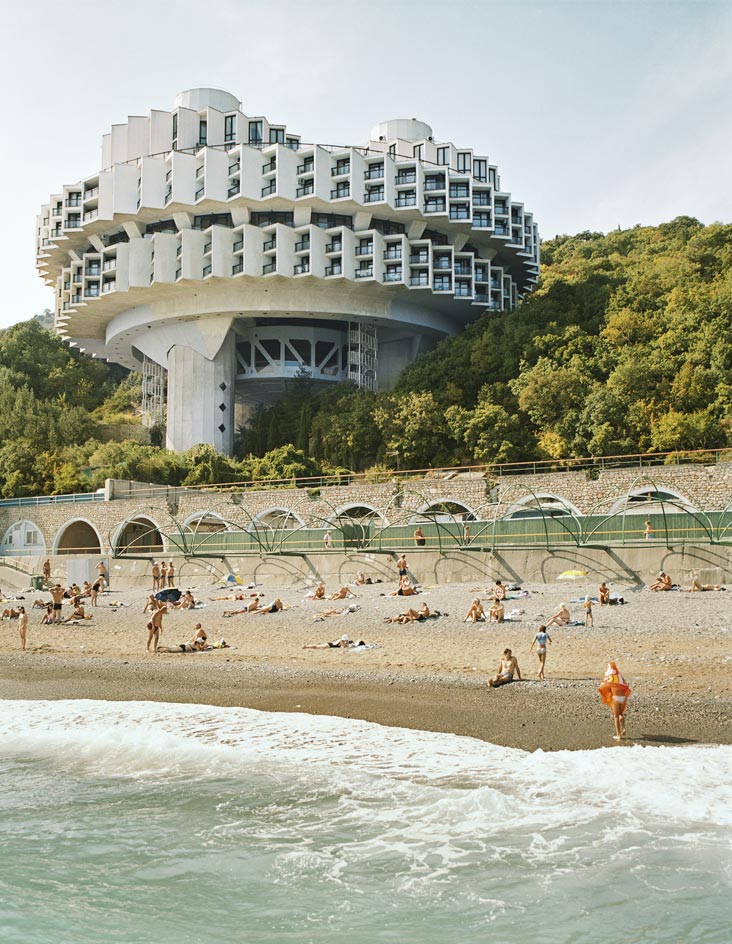
Frédéric Chaubin's fascination with late Soviet-era architecture is seen here in his 2006 photograph of the Druzhba Sanatorium, incongruous within the pastoral setting of Yalta, Ukraine; as seen in book 'Shooting Space’ by Elias Redstone
Yet the Soviets developed their own remarkable genres, using expressive, sculptural language to mould a new architecture. Some of the results have become familiar. The UFO-machine gear of the Druzhba Sanatorium overlooking the beach in Yalta (Igor Vasilevsky, 1983) was so odd that the Pentagon mistook it for a new rocket launch pad. It now adorns the covers of dozens of brutalist books and regularly pops up in Instagram feeds. And the Ministry of Highway Construction in Tbilisi (George Chakhava, 1975) is an 18-storey series of interlocking blocks that can look bizarrely contemporary, even though it was completed half a century ago.
Another UFO landed in a street in Kyiv in the form of the Ukrainian Institute of Scientific and Technological Research and Development (Lev Novikov and Florian Turiev, 1971). Then there is the Polytechnic Institute of Minsk in Belarus (Igor Esman and Viktor Anikin, 1983), a space-age battleship of a building with what looks like ski slopes. These experiments illustrate the efforts across the Socialist republics to develop their own aesthetic identities.
Wallpaper* Newsletter
Receive our daily digest of inspiration, escapism and design stories from around the world direct to your inbox.
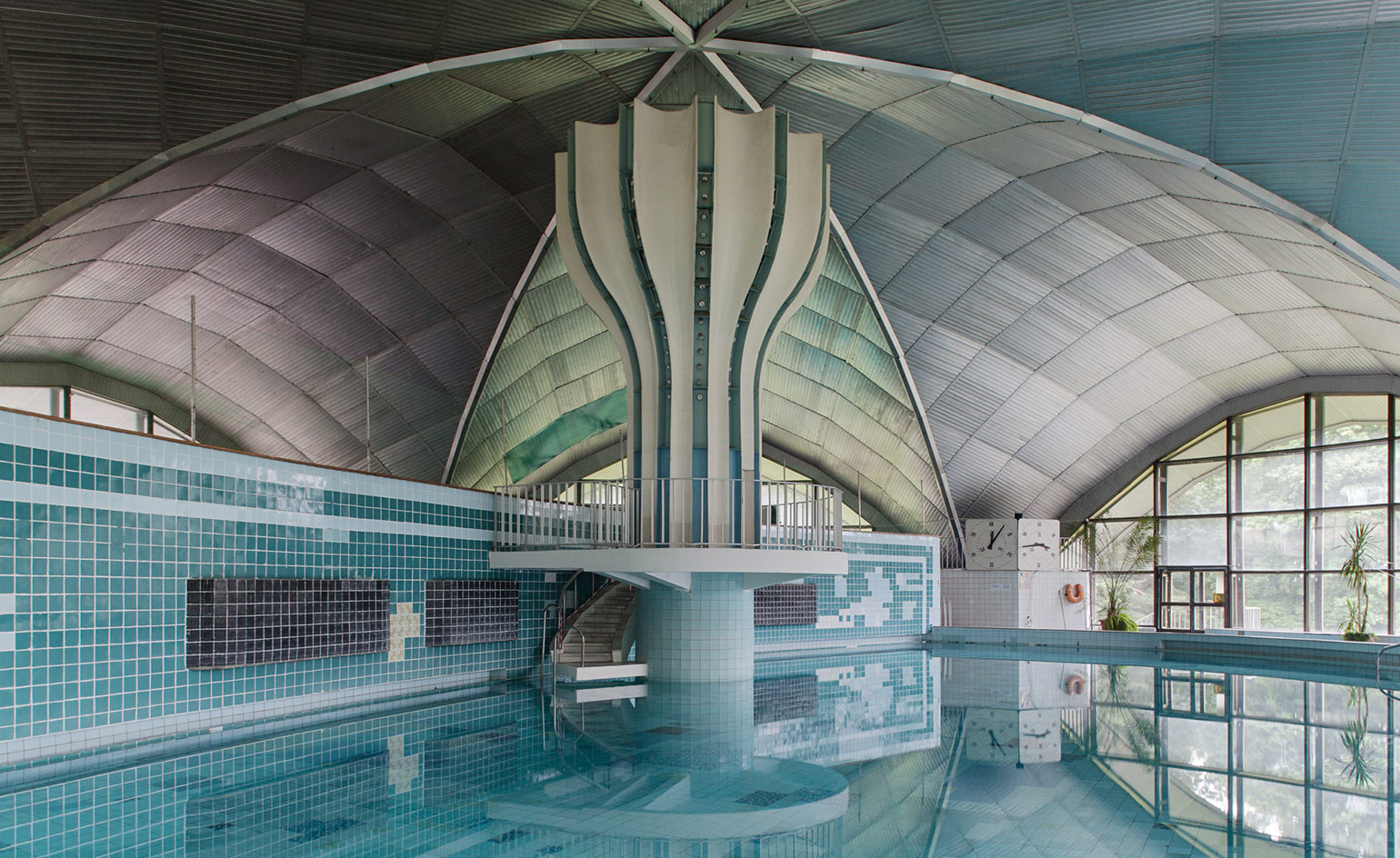
Klyazma sanatorium, built in 1963 around the Klyazminsky Reservoir on the outskirts of Moscow; from the book Holidays in Soviet Sanatoriums
This was also often done through the invention of wholly new building types, socialist equivalents to the cathedrals of the past. There were wedding palaces such as Tbilisi’s castle-like Palace of Ceremonies (Victor Djorbenadze, 1984) and funerary centres like the same architect's Mukhatgverdi Ceremonial Hall (also Tbilisi, 1974, and now itself looking more than a little corpse-like) and the strange, haunting Park of Memory in Kyiv (Avraam Miletskyi, Volodomyr Melnychnko and Ada Rybachuk, 1980).
Then there was a raft of memorials: powerful, theatrical gestures glorifying Soviet efforts in war, in space, in science or in ‘friendship’ with many other nations. There were also circuses (and circuses were very big in the USSR), tributes to tents reimagined in massive concrete, ‘Palaces of the Republic’, ‘Palaces of Sports’ and ‘Palaces of Lenin’, in fact, palaces for the people everywhere.
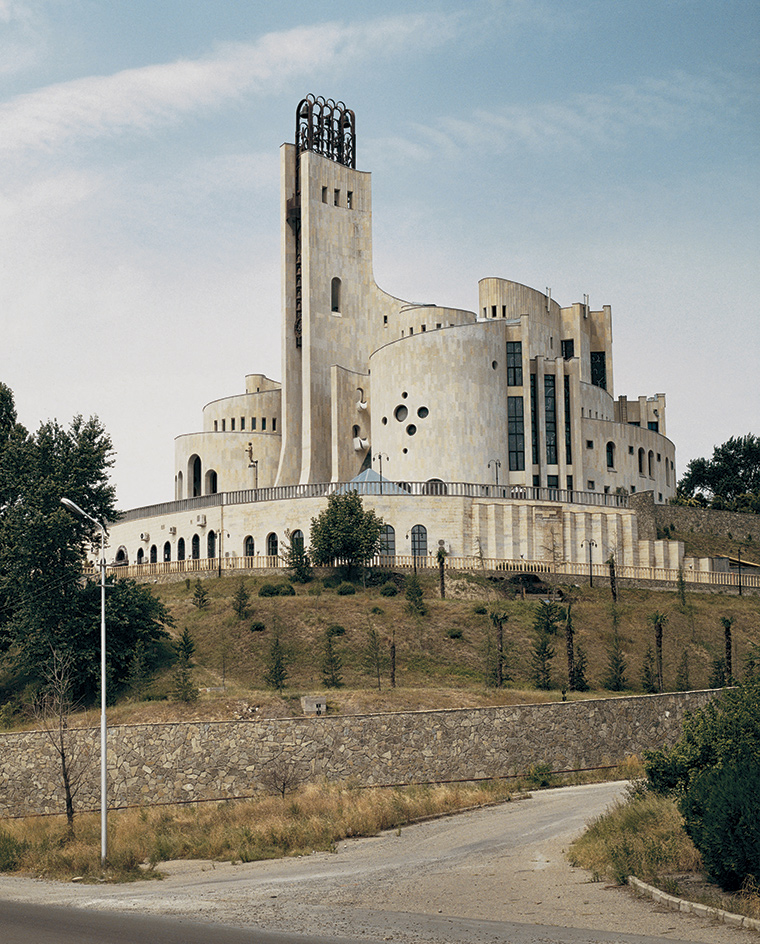
Palace of Ceremonies in Tbilisi
Some of these proletarian palaces also began to display intriguing inflexions, uncharacteristic of Western brutalism. The Peoples’ Friendship Palace in Tashkent (Yevgeny Rozanov, 1981) has hints of Islamic architecture, for instance; the Exhibition Hall of the Uzbek Union of Artists in the same city (R Khayrutdinov and F Tursunov, 1974), yet more so, with ogee arches and a façade like a carpet.
The expansion of holiday provision created yet more opportunities for architectural expression. The gorgeous cantilevered extension of the Union of Writers summer resort in Sevan (Gevorg Kochar, 1969) is an old favourite and the once derelict and now chi-chi Baltic Beach Hotel in Jurmala, Latvia (Normunds Pavārs, Viktors Valgums and Modris Ģelzis, 1981), with its staggered levels like a liner, remains remarkable.
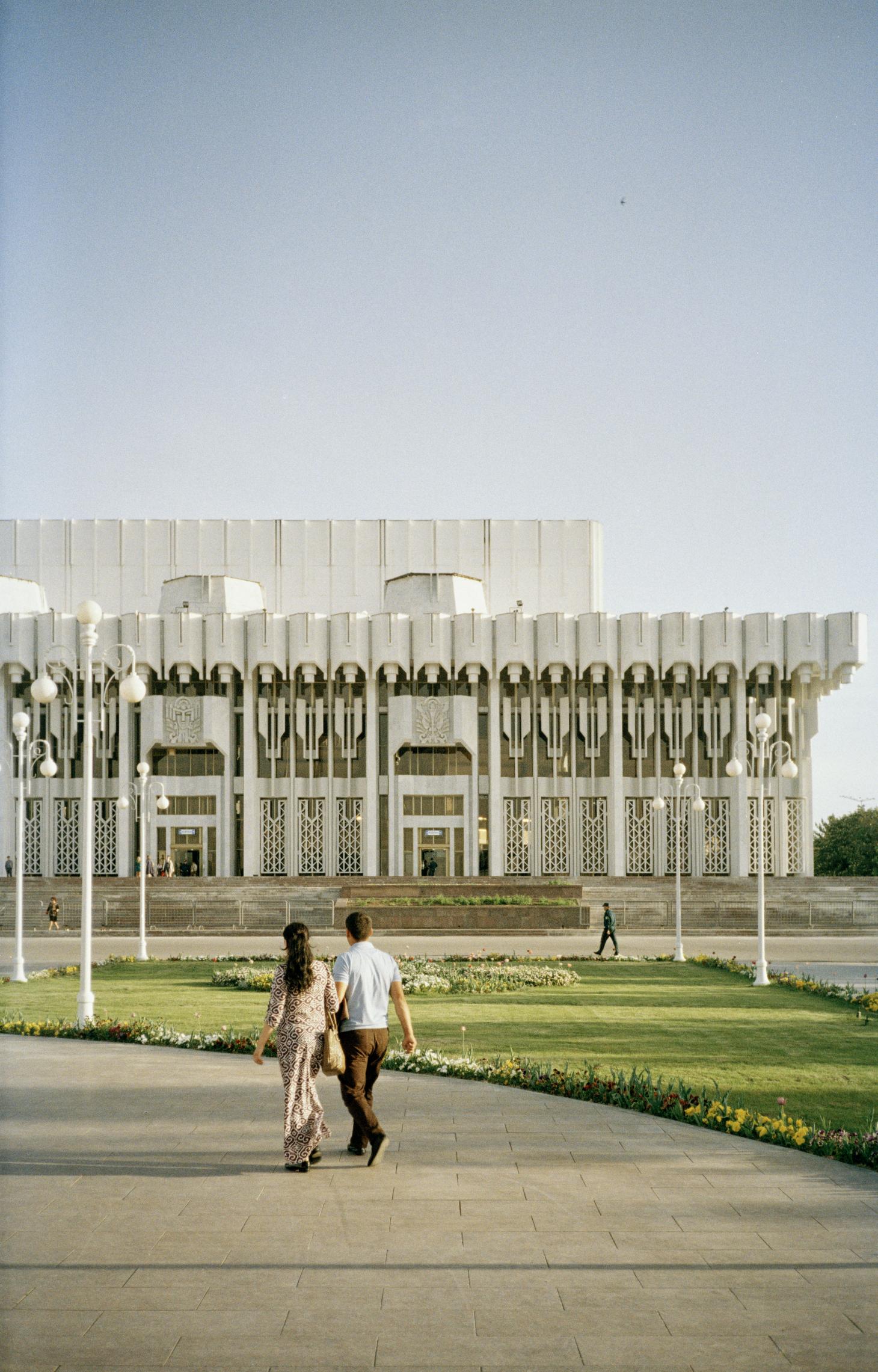
The Peoples’ Friendship Palace, as seen in The Trip to Tashkent story in Wallpaper* January 2020 (W* 250)
Although the republics were keen to use architecture to express their burgeoning identities within the USSR, there was plenty going on in Moscow and the rest of Russia too, much of it dedicated to celebrating science, the atheist state’s religion. The astonishing bulk of the Atomic Engineers’ Building acts like a scientific city wall and the Russian State Scientific Centre for Robotics and Cybernetics (Boris Artyushin and Stanislav Savin, 1986) was a true cathedral of science, designed in the early 1970s but only completed a few years before the regime ran out of cash and Gorbachev ended it all. The slow pace of Soviet construction, a shortage of materials and labour and not a little corruption meant that brutalism flourished later here than it did elsewhere, well into the 1980s.
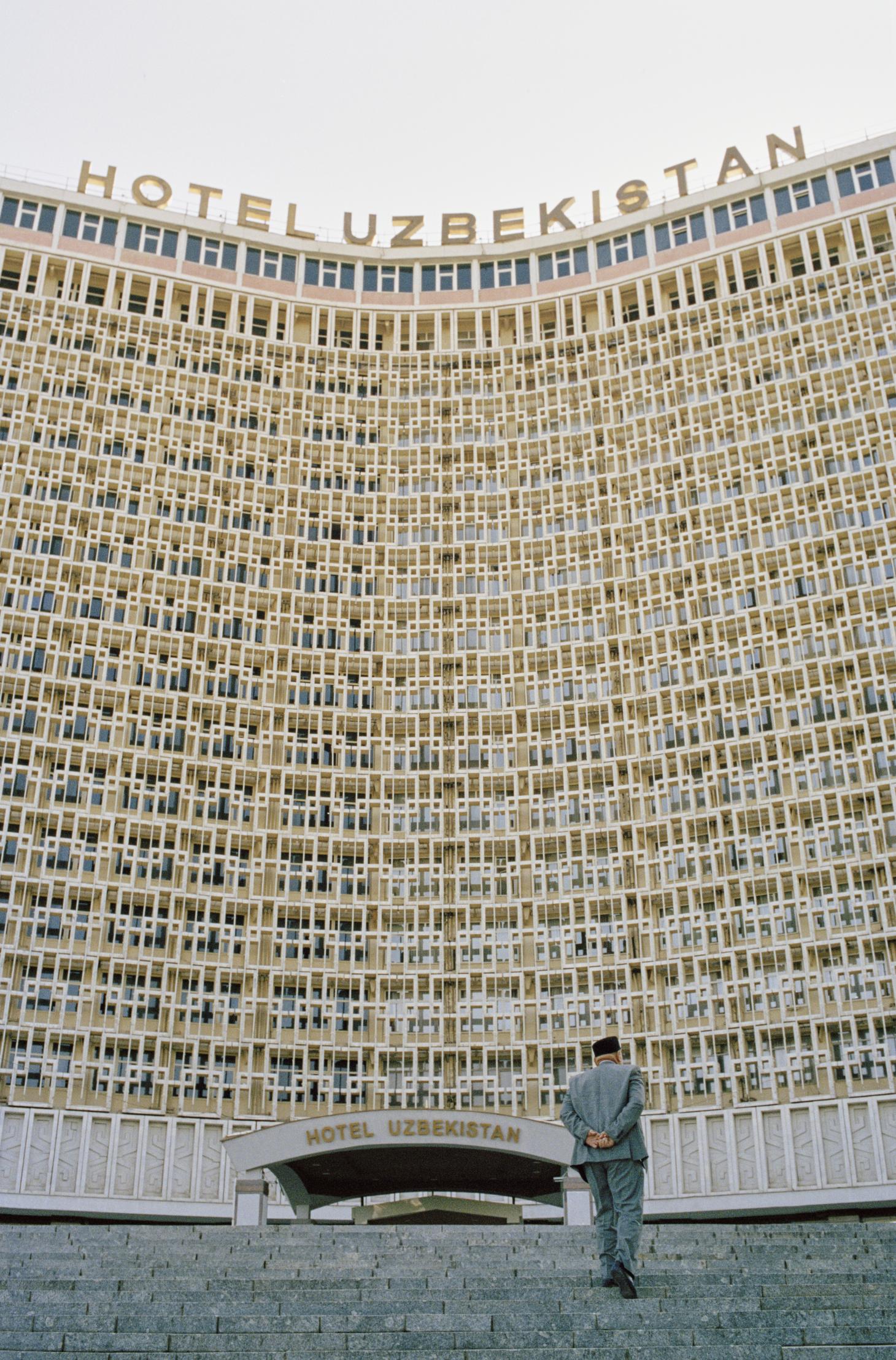
The 1974 Hotel Uzbekistan, designed by Ilya Merport, L Yershova and V Rashchupkin, with a curved façade based on the ornate lattices of Islamic architecture; also from Wallpaper’s trip to Tashkent
These sculptural spectacles, most of which survive in varying states of decay, bridged the visionary experiments of Constructivism with the more modern statement buildings used to build regional and metropolitan identity. From the most modest of bus stops to the most grandiose megablocks, they remain the representatives of a remarkable moment in which architecture’s capacity to define a place and accommodate genuine public participation was taken seriously. Many of the finest examples remain in a precarious position, crumbling and unloved, despite their global appeal and now is the time to save them.
Edwin Heathcote is the Architecture and Design Critic of The Financial Times. He is the author of about a dozen books including, most recently 'On the Street: In-Between Architecture'. He is the founder of online design writing archive readingdesign.org and the Keeper of Meaning at The Cosmic House.
-
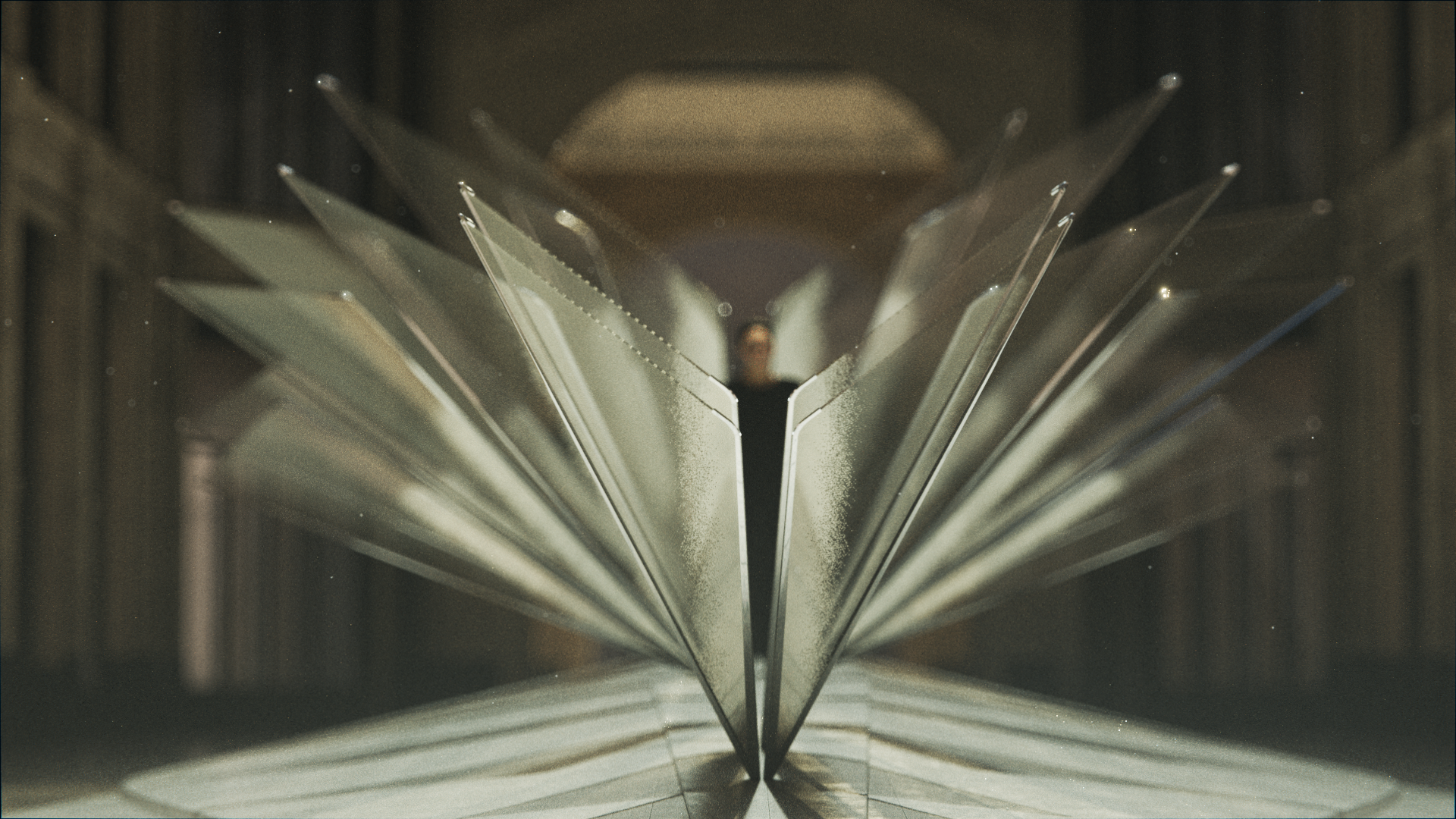 Asus chose Milan Design Week as the springboard for its new high-end Zenbooks
Asus chose Milan Design Week as the springboard for its new high-end ZenbooksMilan Design Week 2025 saw Asus collaborate with Studio INI to shape an installation honouring the slimline new Zenbook Ceraluminum Signature Edition laptop series
By Craig McLean Published
-
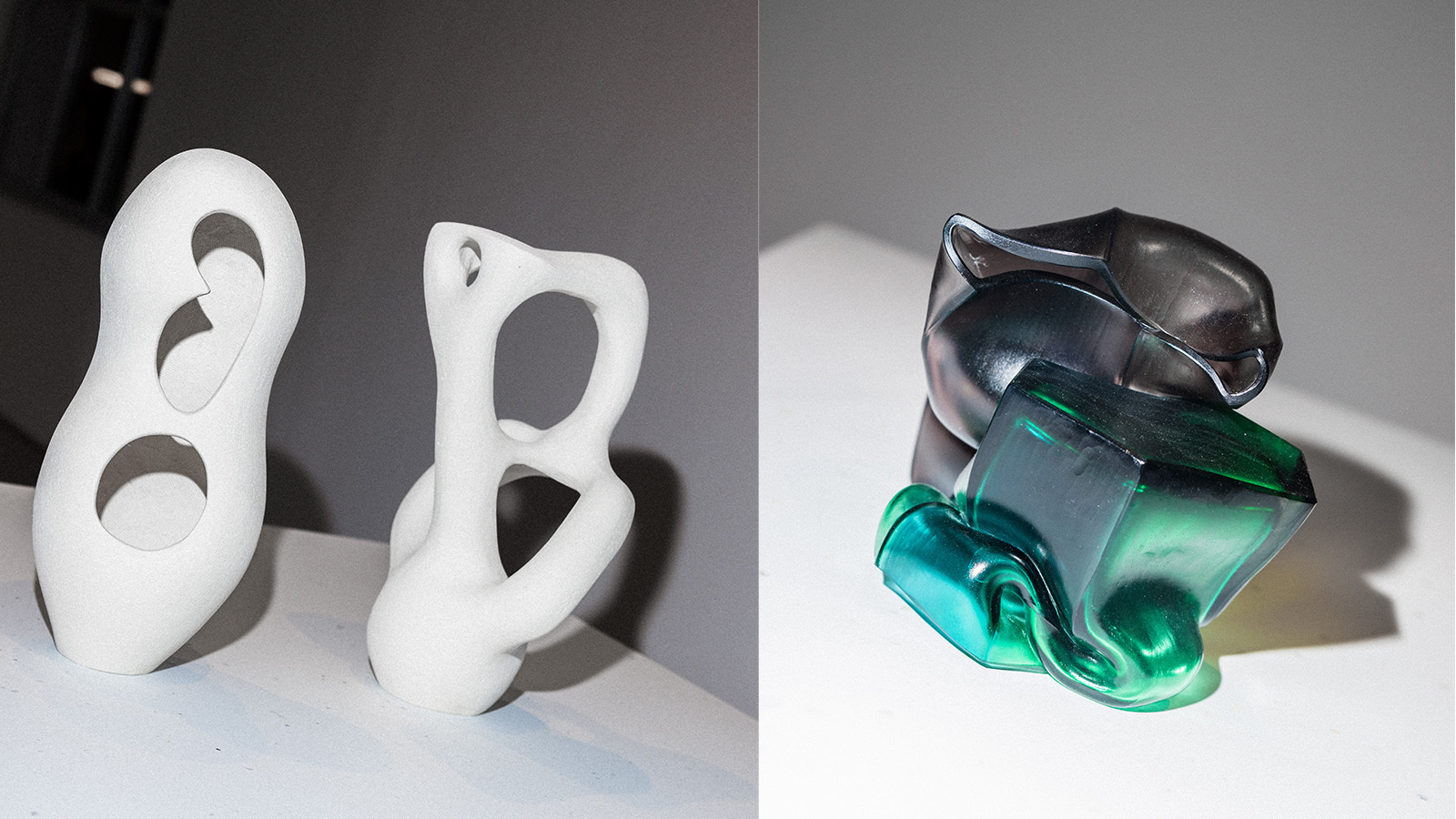 StoneX partners with Wallpaper* for material alchemy at Milan Design Week and beyond
StoneX partners with Wallpaper* for material alchemy at Milan Design Week and beyondThe natural stone purveyor teams up with Wallpaper* for a three-year partnership of material adventures, starting with an exhibition at Triennalo di Milano
By Simon Mills Published
-
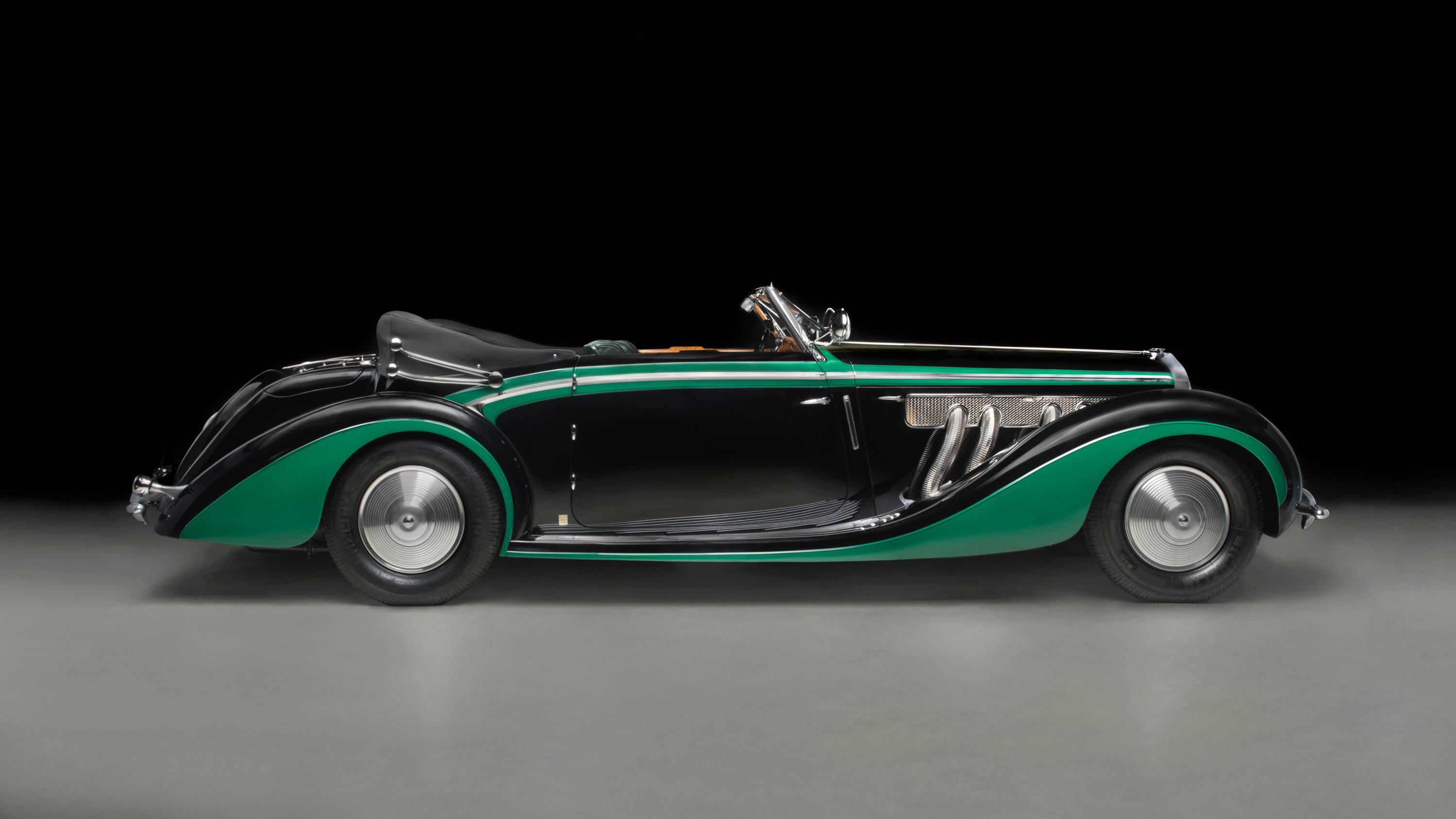 A new show in Saint Louis promises a rare combination of art, cars and elegant fashion
A new show in Saint Louis promises a rare combination of art, cars and elegant fashion‘Roaring: Art, Fashion, and the Automobile in France, 1918-1939’ celebrates a golden age of creativity, showcasing ten unique cars alongside the cream of the era’s style
By Jonathan Bell Published
-
 Croismare school, Jean Prouvé’s largest demountable structure, could be yours
Croismare school, Jean Prouvé’s largest demountable structure, could be yoursJean Prouvé’s 1948 Croismare school, the largest demountable structure ever built by the self-taught architect, is up for sale
By Amy Serafin Published
-
 Jump on our tour of modernist architecture in Tashkent, Uzbekistan
Jump on our tour of modernist architecture in Tashkent, UzbekistanThe legacy of modernist architecture in Uzbekistan and its capital, Tashkent, is explored through research, a new publication, and the country's upcoming pavilion at the Venice Architecture Biennale 2025; here, we take a tour of its riches
By Will Jennings Published
-
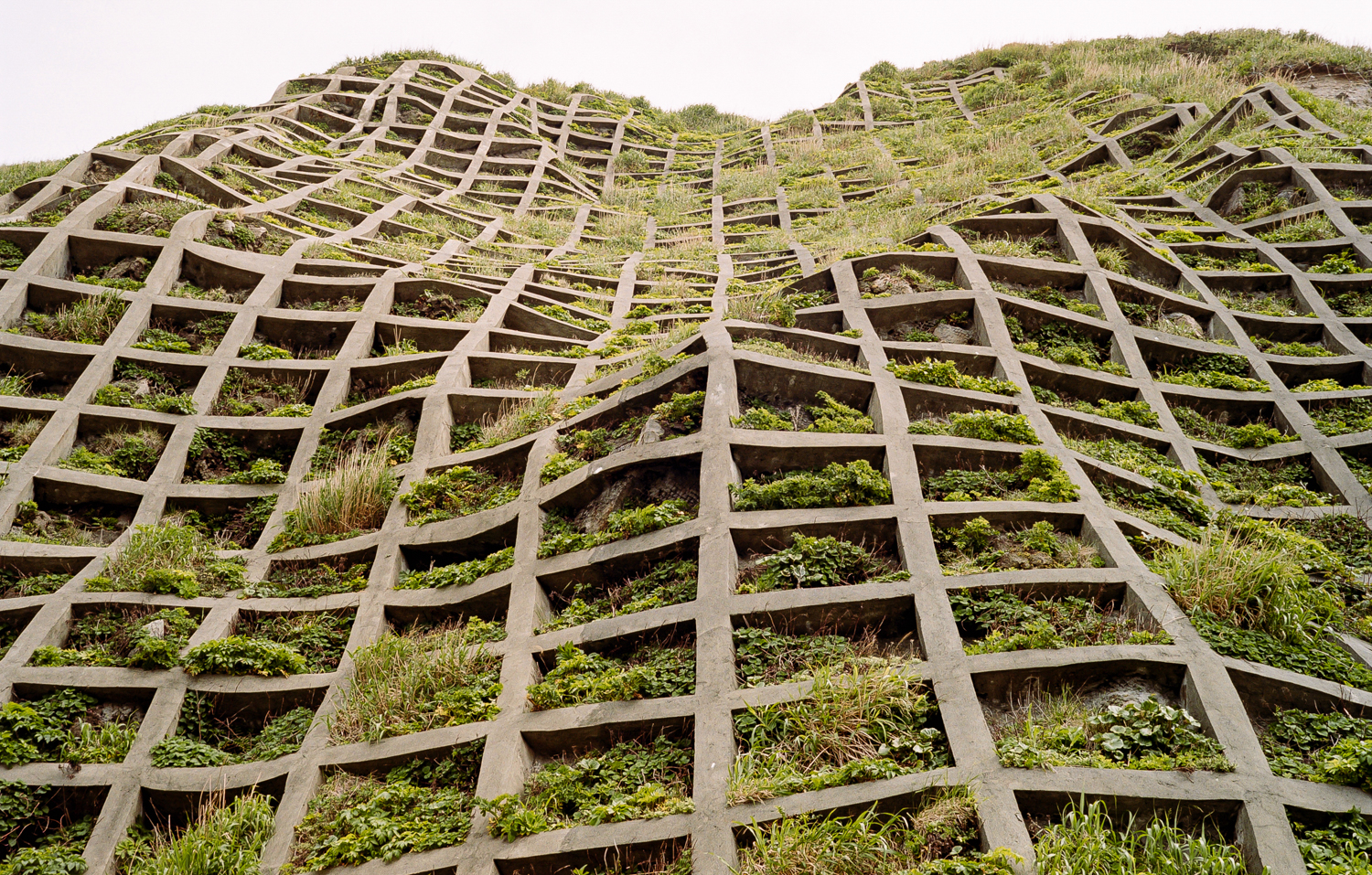 The best brutalism books to add to your library in 2025
The best brutalism books to add to your library in 2025Can’t get enough Kahn? Stan for the Smithsons? These are the tomes for you
By Tianna Williams Published
-
 At the Institute of Indology, a humble new addition makes all the difference
At the Institute of Indology, a humble new addition makes all the differenceContinuing the late Balkrishna V Doshi’s legacy, Sangath studio design a new take on the toilet in Gujarat
By Ellie Stathaki Published
-
 How Le Corbusier defined modernism
How Le Corbusier defined modernismLe Corbusier was not only one of 20th-century architecture's leading figures but also a defining father of modernism, as well as a polarising figure; here, we explore the life and work of an architect who was influential far beyond his field and time
By Ellie Stathaki Published
-
 The upcoming Zaha Hadid Architects projects set to transform the horizon
The upcoming Zaha Hadid Architects projects set to transform the horizonA peek at Zaha Hadid Architects’ future projects, which will comprise some of the most innovative and intriguing structures in the world
By Anna Solomon Published
-
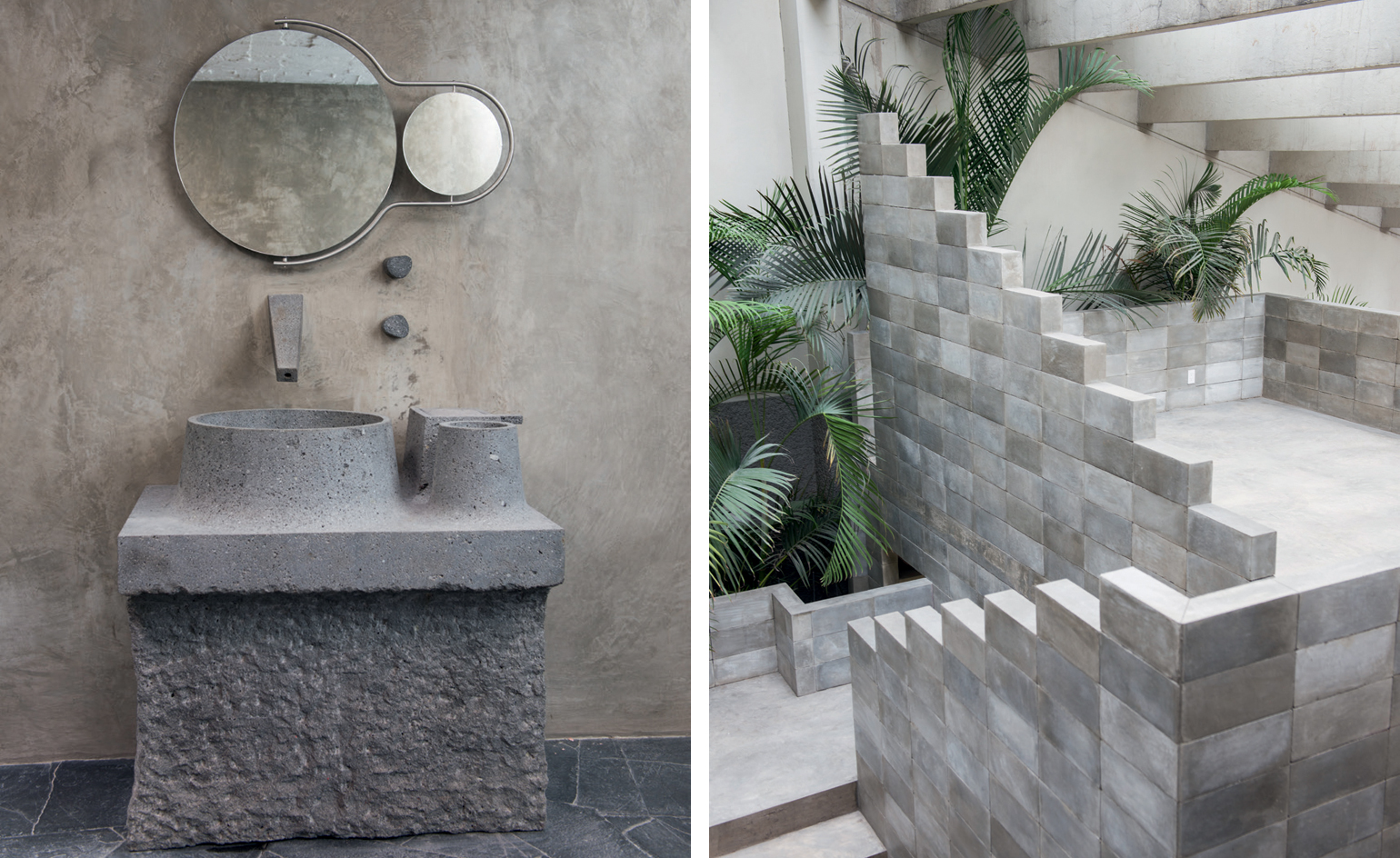 Brutalist bathrooms that bare all
Brutalist bathrooms that bare allBrutalist bathrooms: from cooling concrete flooring to volcanic stone basins, dip into the stripped-back aesthetic with these inspiring examples from around the world
By Tianna Williams Published
-
 How to protect our modernist legacy
How to protect our modernist legacyWe explore the legacy of modernism as a series of midcentury gems thrive, keeping the vision alive and adapting to the future
By Ellie Stathaki Published